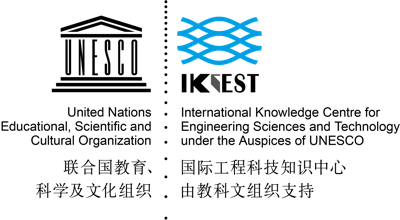Introduction
New York High Line Park (America), 2009In May 2003
Diller Scofidio + Renfro competed against 720 teams from 36 coun tries to win the infrastructure conversion project of the New York City High Line. More than half a decade later, the High Line's transition to a public park is almost complete. On June 8th, architects, elected officials, and advocates watched as Mayor Michael Bloomberg cut the ceremonial red ribbon, officially announcing the opening of the first of three sections. The new park offers an alluring break from the chaotic city streets as users have an opportunity to experience an elevated space with uninterrupted views of the Hudson River and the city skyline.
Reason to Be Selected
Description
The park extends from Gansevoort Street to 34th Street. At 30th Street, the elevated tracks turn west around the Hudson Yards Redevelopment Project to the Jacob K. Javits Convention Center on 34th Street,though the northern section is expected to be integrated within the Hudson Yards development and the Hudson Park and Boulevard. When the Hudson Yards Redevelopment Project's Western Rail Yard is finished in 2018, it will be elevated above the High Line Park, so an exit along the viaduct will be located over the West Side Yard, exiting out to the Western Rail Yard of Hudson Yards. The 34th Street entrance is at grade level, with wheelchair access. The park is open daily from 7 a.m. to 7 p.m. in the winter, 10 p.m. in the spring and fall, and 11 p.m. in the summer, except for the Interim Walkway west of 11th Avenue, which is open until dusk. It can be reached through eleven entrances, five of which are accessible to people with disabilities. The wheelchair-accessible entrances, each with stairs and an elevator, are at Gansevoort, 14th, 16th, 23rd, and 30th Streets. Additional staircase-only entrances are located at 18th, 20th, 26th, and 28th Streets, and 11th Avenue. Street level access is available at 34th Street via an "Interim Walkway" between 30th Street/11th Avenue and 34th Street.
Attractions
The park's attractions include naturalized plantings that are inspired by the landscape that grew on the disused tracks,and views of the city and the Hudson River. The trail is made of pebble-dash concrete walkways that swells and constricts, swings from side to side, and divides into concrete tines that meld the hardscape with the planting embedded in railroad gravel mulch. Stretches of track and ties recall the High Line's former use. Portions of track are adaptively re-used for rolling lounges positioned for river views.Most of the planting, which includes 210 species, is of rugged meadow plants, including clump-forming grasses, liatris, and coneflowers, with scattered stands of sumac and smokebush, but not limited to American natives. At the Gansevoort Street end, a grove of mixed species of birch already provides some dappled shade by late afternoon. Ipê timber for the built-in benches has come from a managed forest certified by the Forest Stewardship Council, to ensure sustainable use and the conservation of biological diversity, water resources, and fragile ecosystems.
The High Line Park also has cultural attractions. As part of a long-term plan for the park to host temporary installations and performances of various kinds. Creative Time, Friends of the High Line, and the New York City Department of Parks and Recreation commissioned The River That Flows Both Ways by Spencer Finch as the inaugural art installation. The work is integrated into the window bays of the former Nabisco Factory loading dock, as a series of 700 purple and grey colored glass panes. Each color is exactly calibrated to match the center pixel of 700 digital pictures, one taken every minute, of the Hudson River, therefore presenting an extended portrait of the river that gives the work its name. Creative Time worked with the artist to realize the site-specific concept that emerged when he saw the rusted, disused mullions of the old factory, which metal and glass specialists Jaroff Design helped to prepare and reinstall.The summer of 2010 featured a sound installation by Stephen Vitiello, composed from bells heard through New York. Lauren Ross, formerly director of the alternative art space White Columns, served as the first curator for the High Line Park.During the construction of the second phase between 20th and 30th Streets, several artworks were installed including, Sarah Sze's "Still Life with Landscape (Model for a Habitat)" a sculpture made of steel and wood, located on the line near 20th and 21st Streets; this structure was built as a house for fauna such as birds and butterflies. Kim Beck's "Space Available" was installed on the roofs of three buildings visible from the southern end. Three 20-by-12-foot (6.1 by 3.7 m) sculptures looked like the armature of empty billboards, constructed like theater backdrops, so they look three-dimensional from a distance.Also installed during the second phase of construction was Julianne Swartz's "Digital Empathy", a work that utilizes audio messages at restrooms, elevators, and water fountains.
| Lat: | 40.7057 |
| Lng: | -73.978 |
| Type: | |
| Region: | NorthAmerica |
| Scale: | District |
| Field: | Landscape |
| City: | New York |


